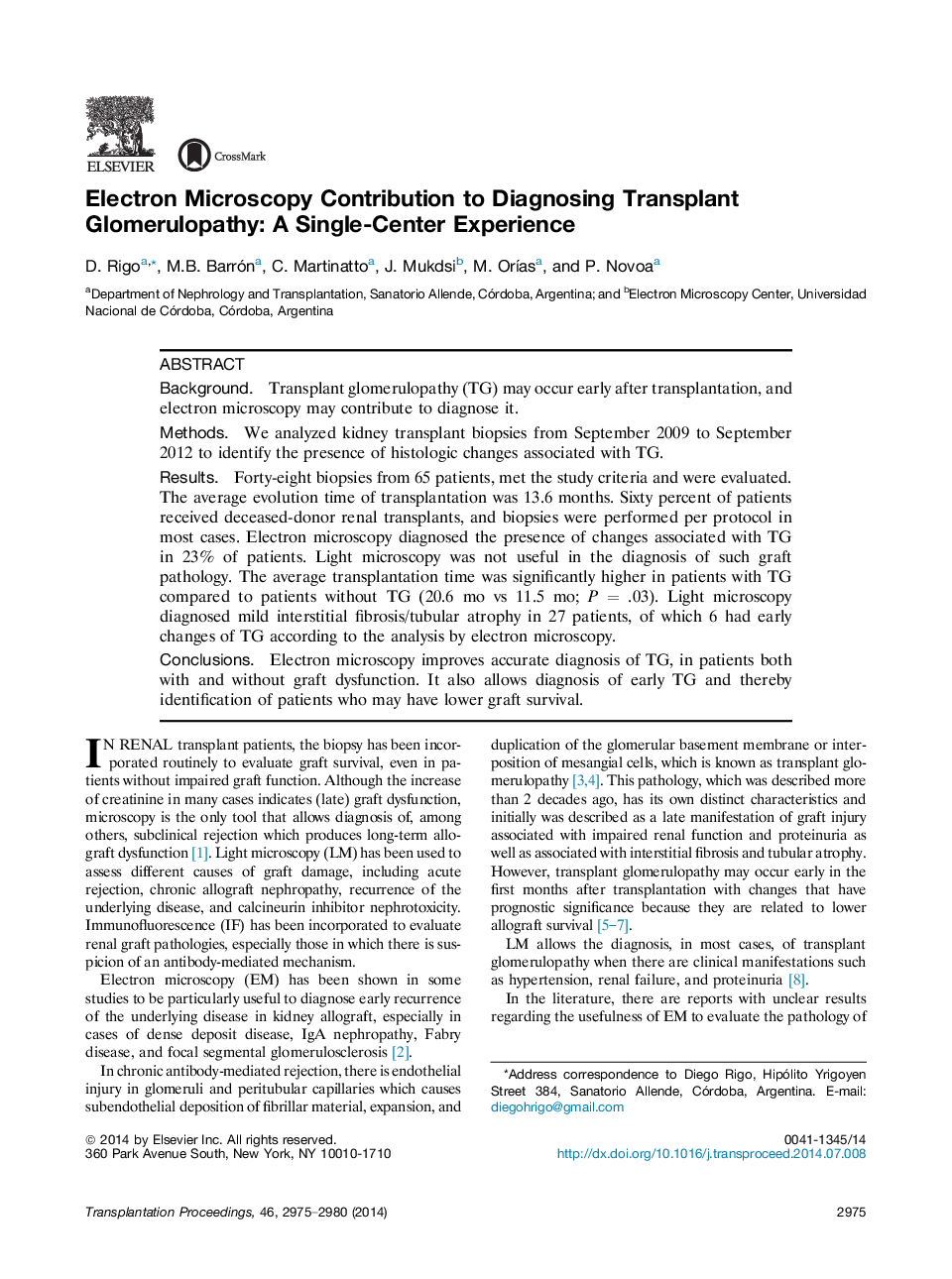| Article ID | Journal | Published Year | Pages | File Type |
|---|---|---|---|---|
| 4256596 | Transplantation Proceedings | 2014 | 6 Pages |
BackgroundTransplant glomerulopathy (TG) may occur early after transplantation, and electron microscopy may contribute to diagnose it.MethodsWe analyzed kidney transplant biopsies from September 2009 to September 2012 to identify the presence of histologic changes associated with TG.ResultsForty-eight biopsies from 65 patients, met the study criteria and were evaluated. The average evolution time of transplantation was 13.6 months. Sixty percent of patients received deceased-donor renal transplants, and biopsies were performed per protocol in most cases. Electron microscopy diagnosed the presence of changes associated with TG in 23% of patients. Light microscopy was not useful in the diagnosis of such graft pathology. The average transplantation time was significantly higher in patients with TG compared to patients without TG (20.6 mo vs 11.5 mo; P = .03). Light microscopy diagnosed mild interstitial fibrosis/tubular atrophy in 27 patients, of which 6 had early changes of TG according to the analysis by electron microscopy.ConclusionsElectron microscopy improves accurate diagnosis of TG, in patients both with and without graft dysfunction. It also allows diagnosis of early TG and thereby identification of patients who may have lower graft survival.
